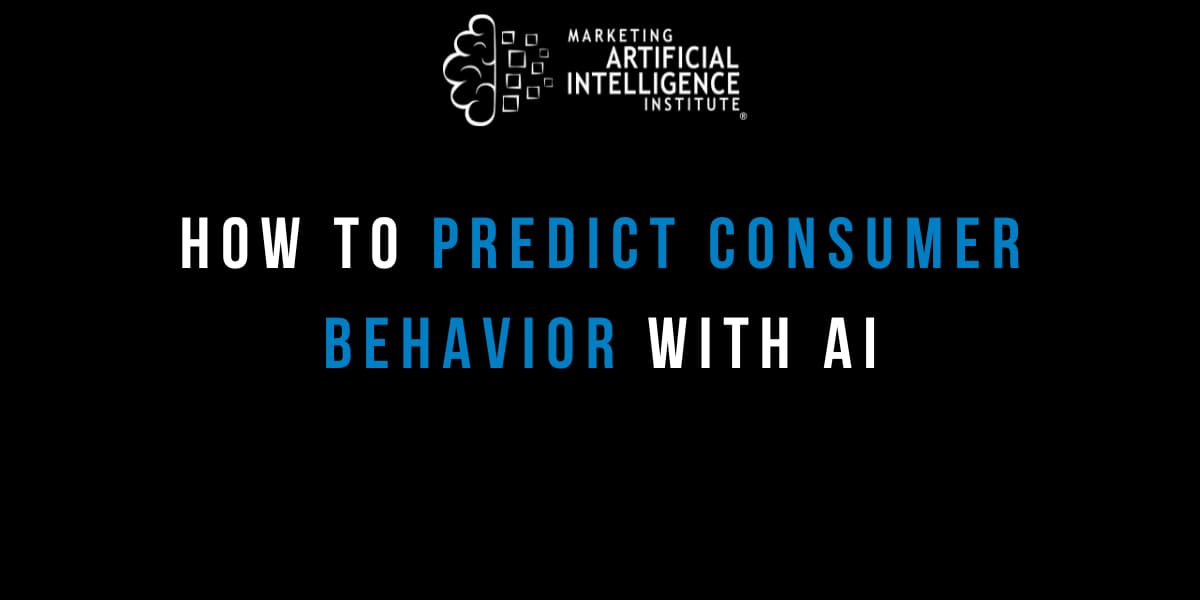Using artificial intelligence, you can now predict consumer behavior using a low-code platform.
That's the promise of Pecan AI, an AI-powered predictive marketing platform. Pecan uses state-of-the-art machine learning to model marketing mix performance, lifetime value, churn, and more.
We spoke with Zofar Bronfman, CEO at Pecan, to learn about this AI-powered marketing solution.
In a single sentence or statement, describe Pecan.
Pecan helps marketing, revenue, and data teams predict the consumer behaviors that impact to revenue-generating KPIs.
How does Pecan use artificial intelligence in its products?
State-of-the-art machine-learning technology is the foundation of Pecan AI. Machine learning shapes every aspect of our low-code predictive analytics platform. It powers automated data preparation, feature engineering, model building and selection, and model deployment and monitoring. We’ve developed machine learning techniques that can address critical business problems. We continuously refine the platform based on experiences with thousands of models across customers from various industries.
What are the primary marketing use cases for your AI-powered solutions?
Marketing mix modeling, predictive lifetime value, customer churn, demand forecasting
What makes your AI-powered solution smarter than traditional approaches and products?
Most marketing-oriented analytics tools only look backward at what happened in the past. It’s much more productive to use data to foresee what will happen in the future. Some companies have in-house data science teams that can build predictive models, but most marketers don’t have access to effective advanced analytics and predictive modeling.
Pecan’s low-code platform brings machine learning directly into marketing teams. These teams can employ their existing analytical skills and domain expertise, and don’t need to rely on data scientists. Instead, they can use the SQL skills their marketing data analysts already have to move from analyzing the past to predicting the future with AI.
Pecan can help solve common marketing challenges with AI. For example, marketing teams can use our marketing mix modeling to understand and improve channel performance. Another example is predicting customer lifetime value to guide faster, better decisions about their campaigns, even in the first day or two after launch.
Are there any minimum requirements for marketers to get value out of your AI-powered technology? (e.g. data, list size, etc.)
The data requirements depend on a customer’s specific models and goals. Generally, at least six months of behavioral, attribution, and/or demographic data may be needed to produce reliable models. Other marketing data and product master data can be helpful, too. We assist customers in identifying and evaluating relevant data sources that our platform can use to produce accurate, actionable predictions.
Who are your ideal customers in terms of company size and industries?
1. Enterprise / traditional B2C with direct customer relationships. e.g retail, telcos, consumer services; $100m+ annual revenue.
2. Digital natives e.g mobile app / gaming. Pure play ecomm, D2C; $25m+ annual revenue or $50m+ VC funding.
What do you see as the limitations of AI as it exists today?
Many businesses would like to use AI to generate predictions, but their data isn’t ready to feed AI models. Predictive models need clean data that’s prepared correctly to produce accurate results.
Additionally, much AI innovation has focused on computer vision, NLP, and generative AI. While those are fantastic, they don’t address most businesses’ primary data type: routine tabular data generated by various business processes.
Traditionally, data engineers and data scientists have spent significant time manually cleaning and preparing that tabular data. To eliminate that manual effort and make AI much more accessible, Pecan has focused on automating data preparation and feature engineering. This capability, among others, helps marketing and other business teams easily and quickly gain AI capabilities. But there’s still more to be done to unlock the value of tabular data for businesses. There’s plenty of room for continued innovation.
What do you see as the future potential of AI in marketing?
AI has vast potential as a partner for marketers in a variety of areas. Generative AI can help drive content creation. Natural language processing can interpret online interactions. Conversational AI can address customer inquiries and offer recommendations. And, of course, AI-powered predictive analytics can provide deeper insights into audience and customer behavior; provide guidance for more personalized outreach to specific audiences and customer segments; and assist in evaluating marketing messages, campaigns, and channels.
While our tools for accomplishing these tasks will only get better, it’s important to remember that human marketers will always have to provide creative energy and expert guidance for AI. Ideally, this will reduce the tedious tasks marketers enjoy less and let them focus on the strategy and creativity that fuel their success.
Any other thoughts on AI in marketing?
For marketers starting out with AI, it’s best to focus on a specific problem to solve. “Using AI” sounds like a good goal, but the fact is that simply using AI doesn’t actually solve your team’s challenges or help you meet your targets.
Instead, you need to pinpoint a way to use AI to address a particular concern. For example, you might find your team struggles to understand how a wide variety of marketing channels contributes to your overall ROI. This challenge is something that today’s marketing mix modeling, driven by machine learning, can help you solve. Maintaining a strong focus on problem-solving and using action-oriented AI tools can help you achieve quick success with AI, and then continue to expand your usage based on what you’ve learned from that accomplishment.
Mike Kaput
Mike Kaput is the Chief Content Officer at SmarterX and a leading voice on the application of AI in business. He is the co-author of Marketing Artificial Intelligence and co-host of The Artificial Intelligence Show podcast.



